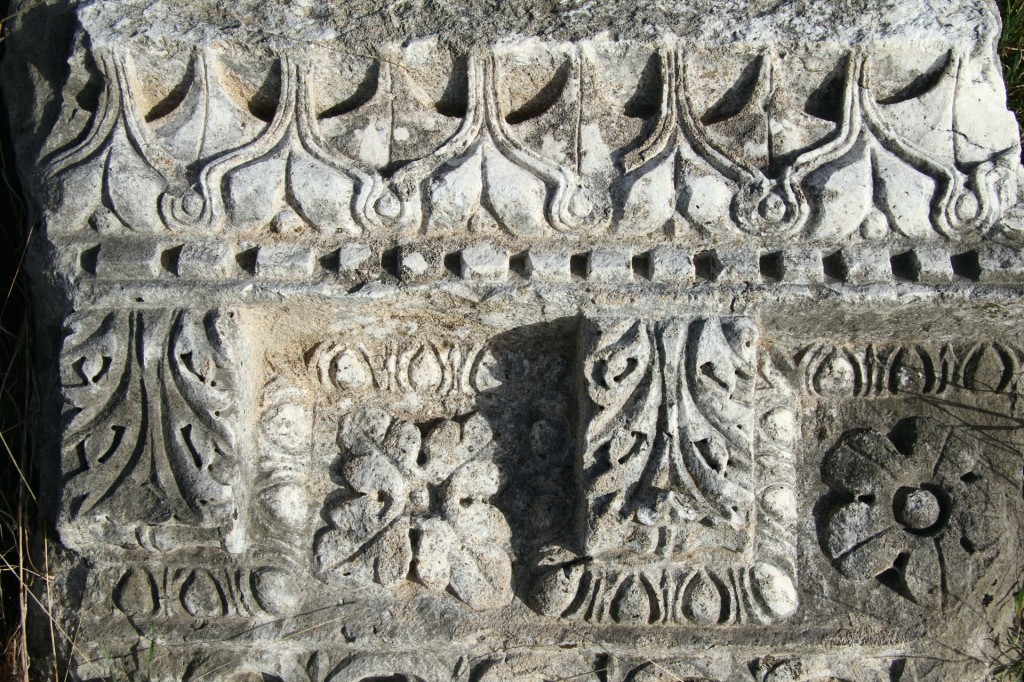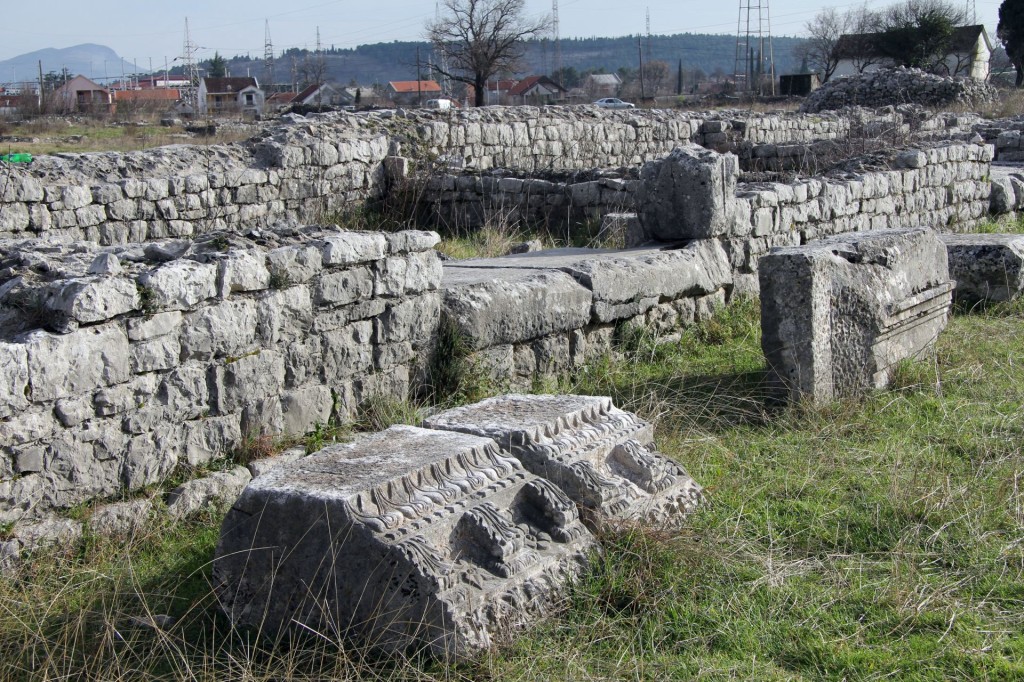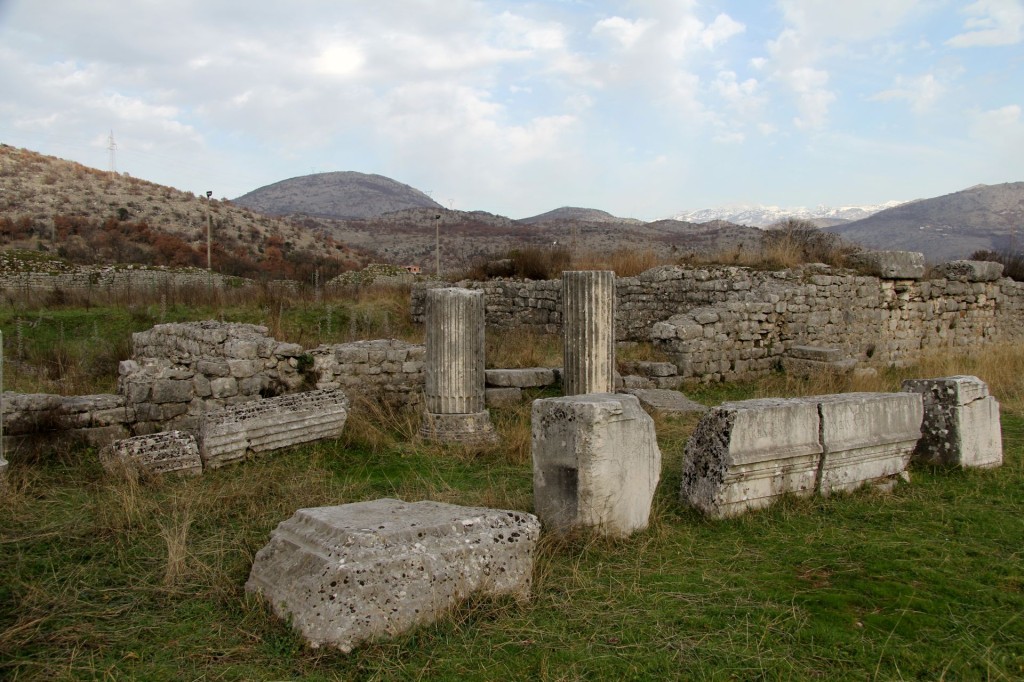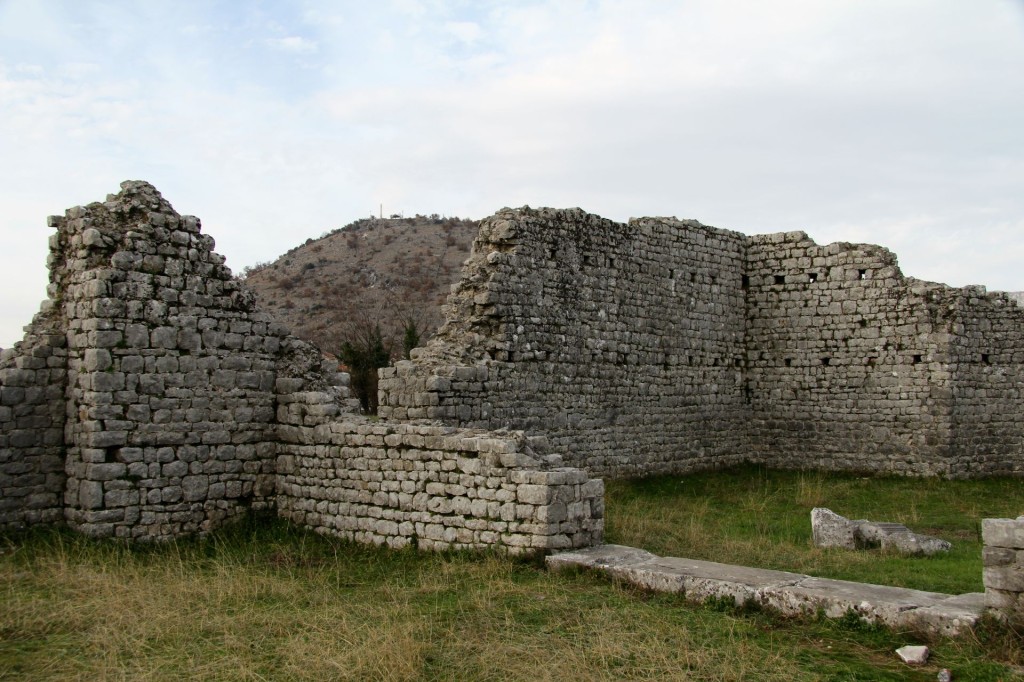 The ruins of Doclea or Duklja, near Podgorica, have always fascinated me. I have been there many times and I was often disappointed to see that the place was neglected, full of litter, with a flock of grazing sheep as only visitors. I also found it a pity that the railroad to Nikšić crosses the site and that there are so many electricity pylons and illegally built houses in the immediate surroundings.
The ruins of Doclea or Duklja, near Podgorica, have always fascinated me. I have been there many times and I was often disappointed to see that the place was neglected, full of litter, with a flock of grazing sheep as only visitors. I also found it a pity that the railroad to Nikšić crosses the site and that there are so many electricity pylons and illegally built houses in the immediate surroundings.
But fortunately, things have changed the last few years and Doclea has finally got a representative place in the tourist offer of Montenegro.
In former times, it was almost impossible to find this archeological site, although it is situated at three kilometers north from Podgorica. The first signposts were placed last year – although the name on them, “Docela” (!), was somewhat confusing… Fortunately, they were soon replaced. But should you be interested in more detailed instructions to get there: take the old road from Podgorica to Danilovgrad (along the left bank of the Morača river in northern direction), turn right at the signpost Rogami, pass the bridge and then take the first road on the right side in front of the small supermarket. Pass the railroad and you will soon see the excavations.
 The gate is open and you can freely enter, entrance fee is not charged. It is a pity that there is no guide or at least a leaflet to learn more about the history of this interesting place. It’s true, there are some information boards, but they only show the places where the ancient buildings were located. So let me tell you something more about Duklja’s history.
The gate is open and you can freely enter, entrance fee is not charged. It is a pity that there is no guide or at least a leaflet to learn more about the history of this interesting place. It’s true, there are some information boards, but they only show the places where the ancient buildings were located. So let me tell you something more about Duklja’s history.
Duklja was the largest settlement of the Docleatae, an Illyrian tribe. The city was built in the 1st century AD on a plateau near the confluence of the Zeta and Morača rivers. It was a large town with 8-10 thousand inhabitants and also the surrounding area was relatively densely populated. Around 300 AD it became the capital of the newly established Roman province, Prevalis, with a population of some 40,000. After the 4th century it lost power and in the beginning of the 5th century it was attacked by the Visigoths. In 518, it was totally destroyed by an earthquake. And finally, in the 7th century AD, after the invasion of the Avar – Slavic tribes, Doclea lost its urban characteristics.
 Being a typical Roman town, the urban plan of Doclea shows a central axis which used to connect still visible and recognizable representative structures, i.e. the Forum with a Basilica, the temples of Diana and Roma, the ramparts, the thermal spas, the urban villas, and many other undiscovered architectural edifices – towers, streets, water supply systems, gates, etc. Necropoli were located to the south-east and west from Doclea. At the south-east necropolis, more than 300 tombs have been explored, dating back to the period 1st – 4th century. Apart from the ashed of cremated bodies, the tombs contained many precious objects: jewelry, toilette bottles, ceramic and glass dishes, fibulae, etc. Nowadays, many exhibits can be seen in the Podgorica City Museum.
Being a typical Roman town, the urban plan of Doclea shows a central axis which used to connect still visible and recognizable representative structures, i.e. the Forum with a Basilica, the temples of Diana and Roma, the ramparts, the thermal spas, the urban villas, and many other undiscovered architectural edifices – towers, streets, water supply systems, gates, etc. Necropoli were located to the south-east and west from Doclea. At the south-east necropolis, more than 300 tombs have been explored, dating back to the period 1st – 4th century. Apart from the ashed of cremated bodies, the tombs contained many precious objects: jewelry, toilette bottles, ceramic and glass dishes, fibulae, etc. Nowadays, many exhibits can be seen in the Podgorica City Museum.
Another curiosity: the so-called Glass of Podgorica, found during excavations in Doclea in the middle of the 19th century, can now be admired in the Hermitage in St. Petersburg!
Altogether: Duklja or Doclea is really worth a visit. This also appears from the fact that, since 2010, Doclea is part of the Montenegrin tentative list as a candidate for being included into the UNESCO World Heritage List.


Hi, thanks for Information und fotos. As for your information, Doclea is also where the big Roman Emporer Diocletian came from.